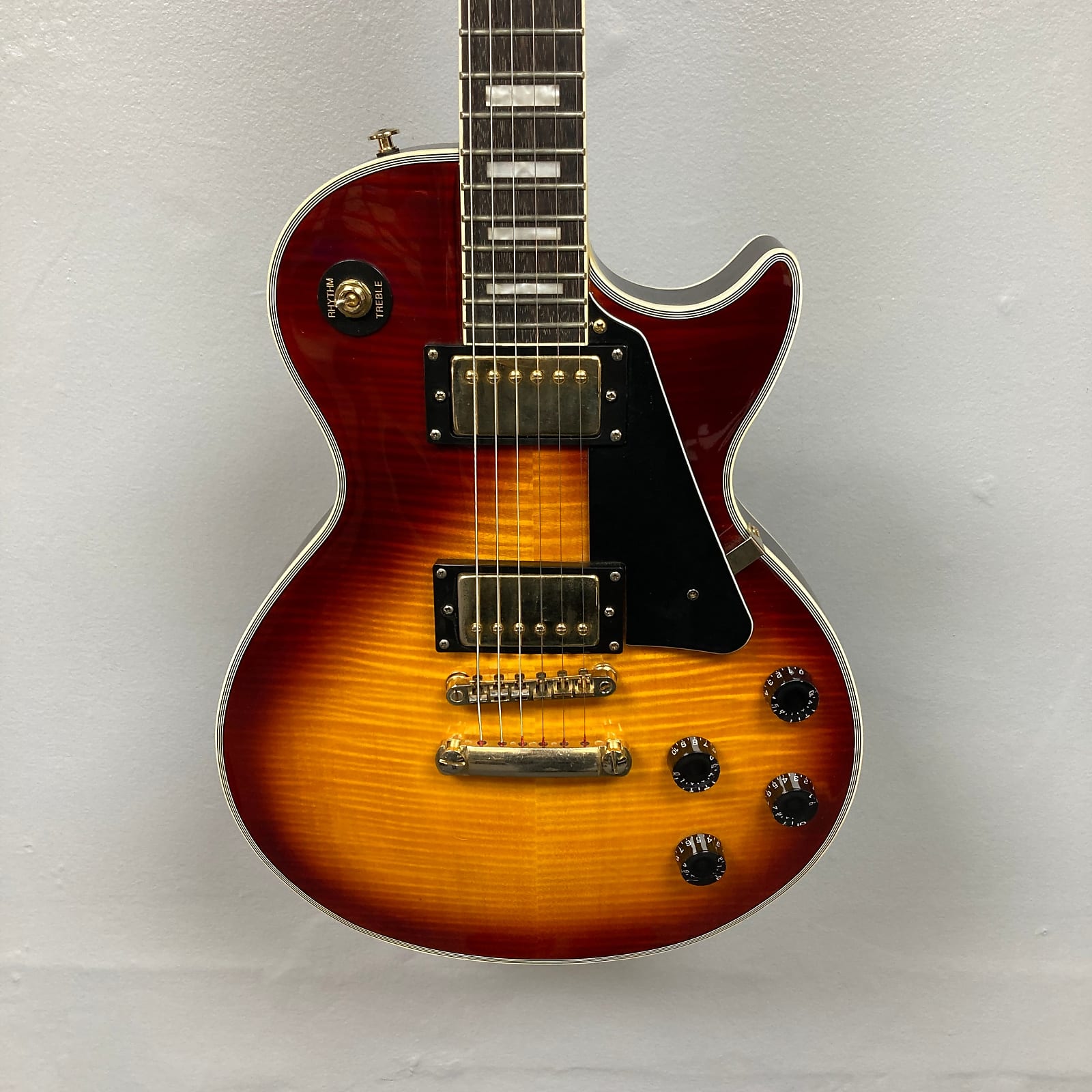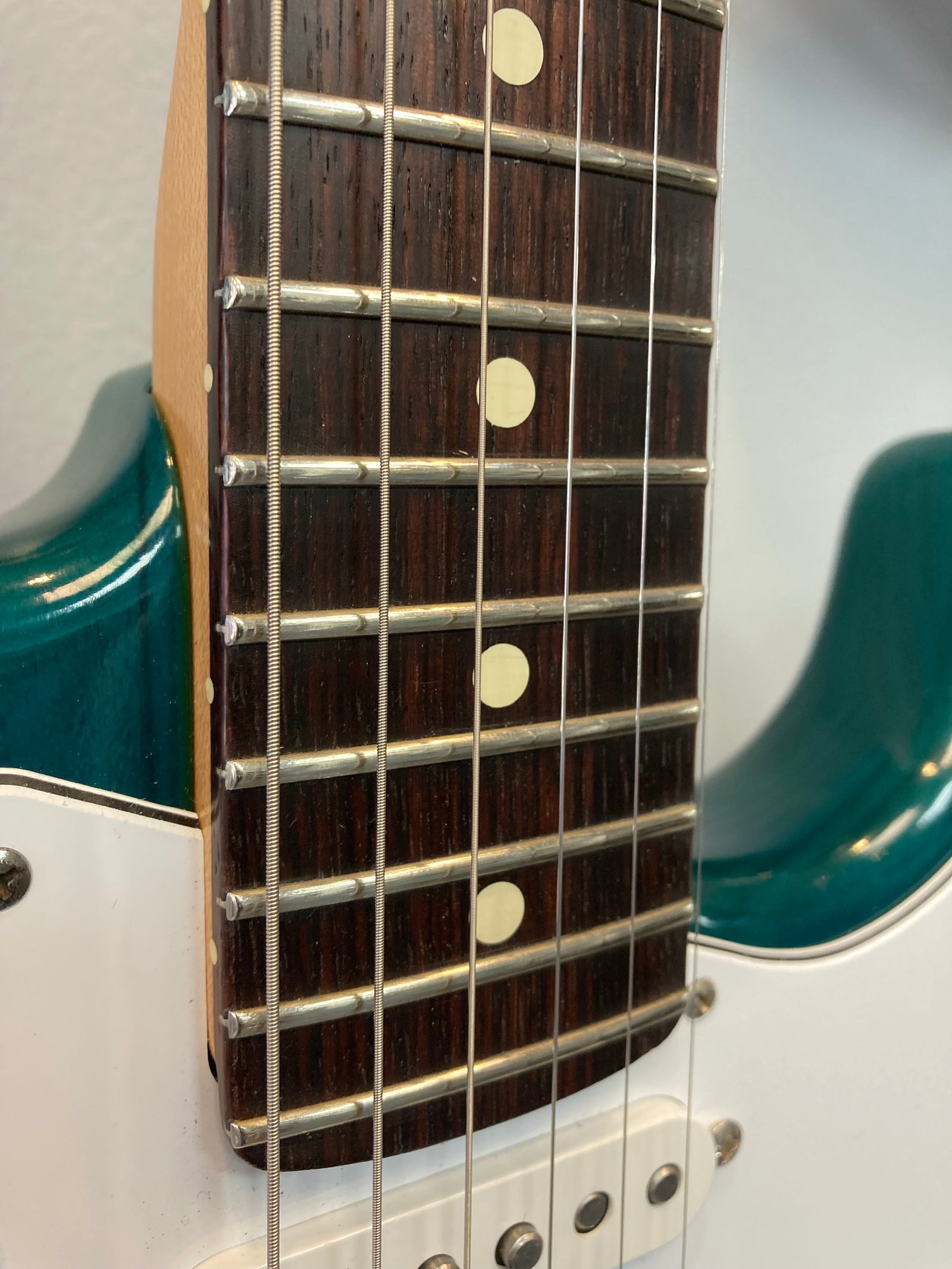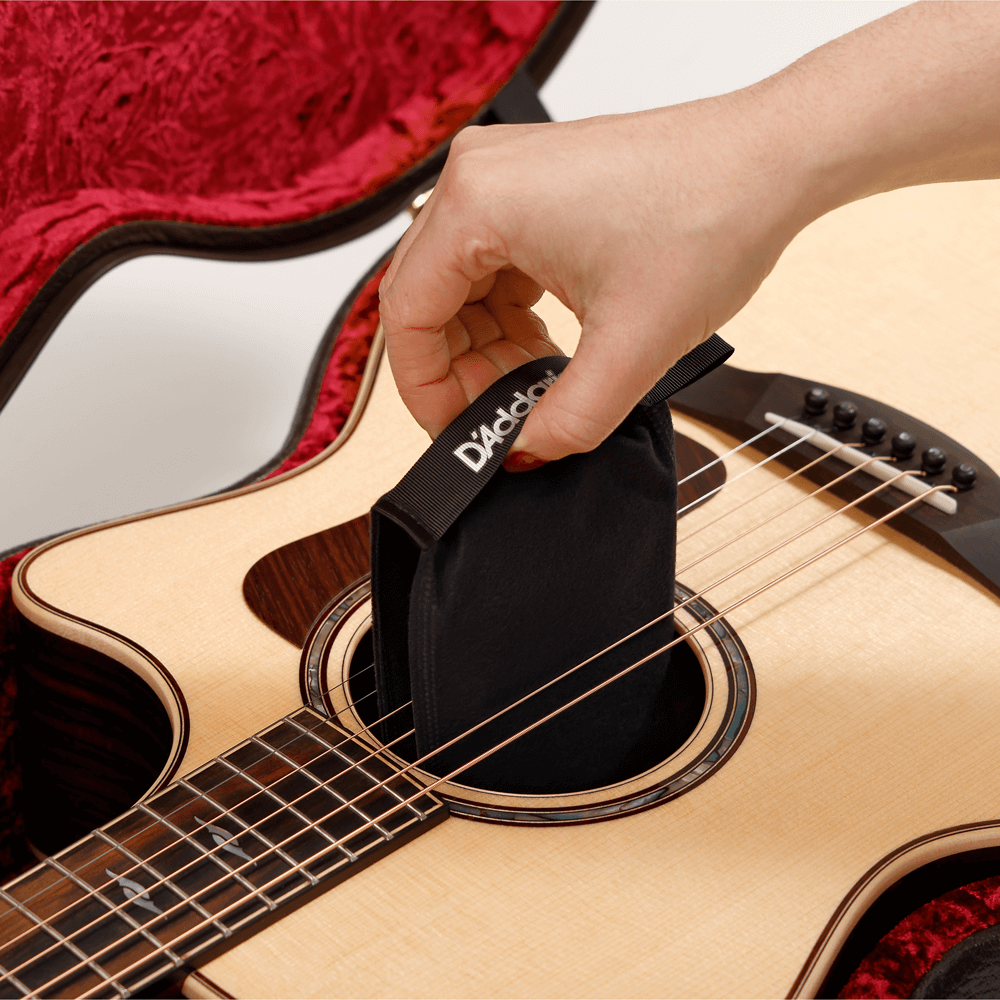Your guitar’s nut might seem like a small component, but its impact on tone, tuning, and playability is anything but minor. Whether you’re upgrading a starter guitar or fine-tuning a high-end instrument, the nut’s material and design can help—or hinder—your sound. In this guide, we’ll explore the most common nut materials, their tonal effects, and how to choose the best fit for your playing style.
Tuning Stability: Tuning stability is heavily influenced by friction at the nut. When strings don’t glide smoothly through the nut slots, tuning issues often follow. Materials like graphite and Tusq XL are excellent choices for minimizing friction, especially during tremolo use or heavy string bending. Smooth, well-lubricated nut slots help keep tuning consistent, and external lubricants like MusicNomad's Tune-It or valve oil can enhance stability even further. Pencil graphite is a traditional option, though it tends to leave a dark residue and isn’t ideal for aesthetics.
Material choice is only half the battle—proper nut shaping is just as important. Tight nut slots can cause strings to bind, preventing them from returning to pitch properly after bends or tremolo use. Poorly angled slots may lead to buzzing or even a sitar-like tone if the string doesn’t seat correctly. Similar problems can also occur at the saddle if the slot shape or angle is incorrect.
Intonation: The nut's placement and how cleanly the strings break over it contribute to accurate pitch on the lower frets. Inaccurate slot angles or depths can cause notes to sound sharp or flat.
Tone and Sustain: Though the nut only affects tone when playing open strings, it can still contribute to the guitar’s overall resonance and sustain. Certain materials, like bone or brass, transmit string vibrations more efficiently into the neck.
Types of Guitar Nuts
Guitar nuts come in various designs, each offering unique advantages depending on the instrument and the player's needs.
-
Traditional Nuts: Found on most guitars, these fixed-position nuts are typically made from bone, Tusq, plastic, or graphite. They are reliable and effective for maintaining consistent string spacing and action without any moving parts.
-
Locking Nuts: Common on guitars with Floyd Rose or similar tremolo systems, locking nuts clamp the strings tightly in place to prevent tuning drift—even during aggressive vibrato. Unlike other nuts that aim to reduce friction, locking nuts eliminate string movement entirely. This design delivers superior tuning stability but requires more involved string changes and careful setup.
-
Roller Nuts: These use small ball bearings that allow the strings to glide smoothly during tremolo use. They reduce friction at the nut, making them great for tuning stability. However, due to their mechanical nature, the moving parts can slightly dampen sustain and alter tone.
-
Compensated Nuts: Designed to improve intonation, these nuts feature angled or staggered grooves that adjust string length slightly.
-
Zero Fret Nuts: Incorporate a fret placed at the zero position (right where the nut is), producing consistent tone between open and fretted notes. This type of nut serves primarily as a string spacing guide.
-
Brass Nuts: Known for their bright, punchy tone and sustain, though they can be harsh or accelerate string wear.
-
Wooden Nuts: Found on vintage guitars like the Kalamazoo KG-11, offering mellow tone and historical authenticity but limited durability.
Comparing Nut Materials: Tone, Feel, and Practicality
Bone
Warm, rich tone with excellent sustain. It’s the gold standard, but natural inconsistencies require expert shaping.
Tusq
Synthetic material that mimics bone with more consistency. Balanced tone, easy to shape, and great for upgrades.
Tusq also offers a self-lubricating variant, Tusq XL, containing PTFE to reduce friction—ideal for tremolo and heavy bending.
Graphite
It is self-lubricating and has excellent tuning stability. It has a slightly darker tone, but it is a top choice for players who use vibrato or bends often.
Plastic
This is common on entry-level guitars. It has poor sustain and tone. If replacing it, always upgrade to Tusq, Tusq XL, or graphite.
Brass
Bright, articulate, and long-lasting, it is great for cutting tones but may increase string wear and sound too sharp for some.
Wood
Seen on vintage instruments. Offers warm tone but lacks durability and stability. Best for restorations.
Acoustic vs. Electric Guitar Nuts
Acoustics benefit from tonal richness—making bone and Tusq the best choices. Electric guitars, especially those with tremolos, prioritize tuning stability. Graphite, Tusq XL, and roller nuts work well here.
How to Choose the Right Nut for Your Style
-
Want warmth and sustain? Go with bone or Tusq.
-
Need tuning stability for tremolo or bends? Choose graphite, roller, locking, or Tusq XL.
-
For better intonation, opt for a compensated or zero fret nut.
-
Restoring a vintage model? Stick with wood or bone.
-
Replacing plastic? Always upgrade—it costs the same to install a better nut.
Conclusion: When Nut Material Really Matters
The nut only influences tone when playing open strings, but that doesn’t mean it doesn’t matter. If you rarely use open strings and rely heavily on effects, you may not notice dramatic differences between nut materials. However, for players focused on clean tone, acoustic performance, or long-term tuning stability, the nut is far more than just a string guide. It’s a tonal and mechanical foundation.
Even subtle upgrades in nut material can yield meaningful improvements in sustain, clarity, and consistency. If you're already investing in a replacement, there's little reason to stick with low-grade plastic when better options are available. Matching your nut material to your tone goals and playing style ensures your instrument delivers every ounce of performance it's capable of, right from the first note.
Bring Out the Best in Your Guitar
If you suspect your guitar’s nut may be holding back your tone or tuning, we’re here to help. Many players deal with dull tone, tuning issues, or high action without realizing the nut is to blame. At Guitars on Main, we specialize in identifying worn or poorly cut nuts and replacing them with the ideal upgrade for your style.
Stop by for a quick inspection—we’ll let you know if your nut is working for you or against you. Whether you're considering bone, Tusq, or graphite, we’ve got the parts and the expertise to get your guitar playing its best.
Visit us at 84 E Main Street, Mount Joy or book a setup online. Your tone deserves better.
Frequently Asked Questions
Q: Does the nut affect the tone of fretted notes?
A: No. The nut only affects tone and sustain when playing open strings. Once you fret a note, the vibration point shifts to the fret itself, bypassing the nut.
Q: What is the best nut material for tuning stability?
A: Graphite, Tusq XL, and roller nuts are top choices for tuning stability because they reduce friction, helping strings return to pitch more reliably after bending or using a tremolo.
Q: Is bone better than synthetic materials?
A: Bone offers excellent tone and sustain, but its natural inconsistencies can affect performance. Tusq and Tusq XL aim to replicate bone's tonal benefits with greater consistency and added features like self-lubrication.
Q: Should I replace a plastic nut?
A: Yes. If your guitar has a plastic nut, upgrading to Tusq, Tusq XL, or graphite can improve tone, tuning, and overall feel—with no extra labor cost during installation.
Q: What’s the difference between Tusq and Tusq XL?
A: Tusq provides consistent tone and sustain similar to bone. Tusq XL includes a self-lubricating compound (PTFE) for improved tuning stability, especially helpful for tremolo users.
Q: Do acoustic and electric guitars need different nut materials?
A: Not necessarily, but their needs differ. Acoustics benefit most from tonal richness (bone or Tusq), while electrics often prioritize tuning stability (graphite, Tusq XL, roller).




